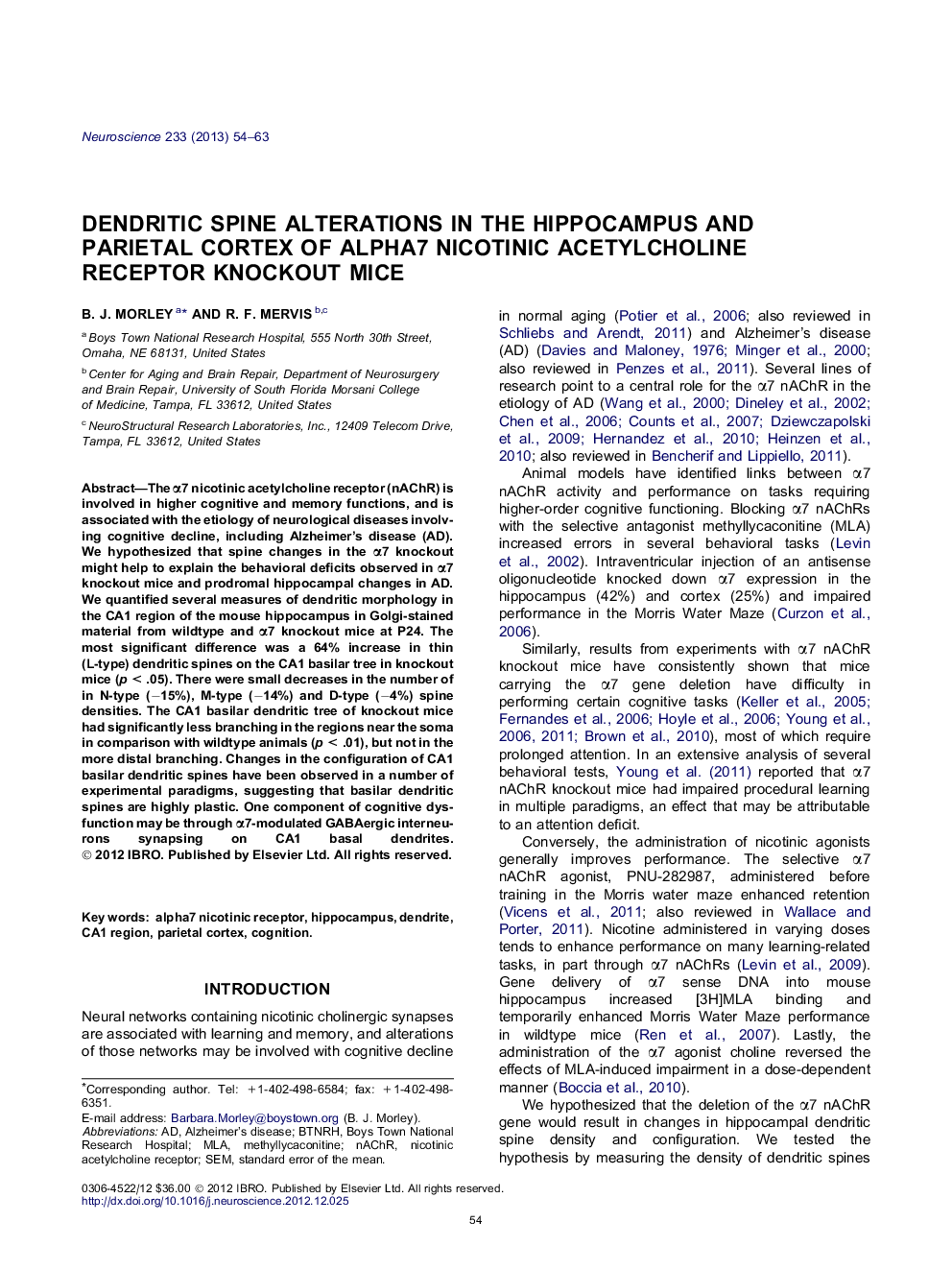| Article ID | Journal | Published Year | Pages | File Type |
|---|---|---|---|---|
| 4338061 | Neuroscience | 2013 | 10 Pages |
The α7 nicotinic acetylcholine receptor (nAChR) is involved in higher cognitive and memory functions, and is associated with the etiology of neurological diseases involving cognitive decline, including Alzheimer’s disease (AD). We hypothesized that spine changes in the α7 knockout might help to explain the behavioral deficits observed in α7 knockout mice and prodromal hippocampal changes in AD. We quantified several measures of dendritic morphology in the CA1 region of the mouse hippocampus in Golgi-stained material from wildtype and α7 knockout mice at P24. The most significant difference was a 64% increase in thin (L-type) dendritic spines on the CA1 basilar tree in knockout mice (p < .05). There were small decreases in the number of in N-type (−15%), M-type (−14%) and D-type (−4%) spine densities. The CA1 basilar dendritic tree of knockout mice had significantly less branching in the regions near the soma in comparison with wildtype animals (p < .01), but not in the more distal branching. Changes in the configuration of CA1 basilar dendritic spines have been observed in a number of experimental paradigms, suggesting that basilar dendritic spines are highly plastic. One component of cognitive dysfunction may be through α7-modulated GABAergic interneurons synapsing on CA1 basal dendrites.
► We observed an increase of thin spines in the CA1 basal dendrites of alpha7 nAChR knockout mice. ► We observed small decreases in N-type, M-type, and D-type spines in the knockout mice. ► We observed decreased branching in the proximal region of the CA1 basal dendrites. ► Changes in spine configuration were not observed in the CA1 apical dendrites.
